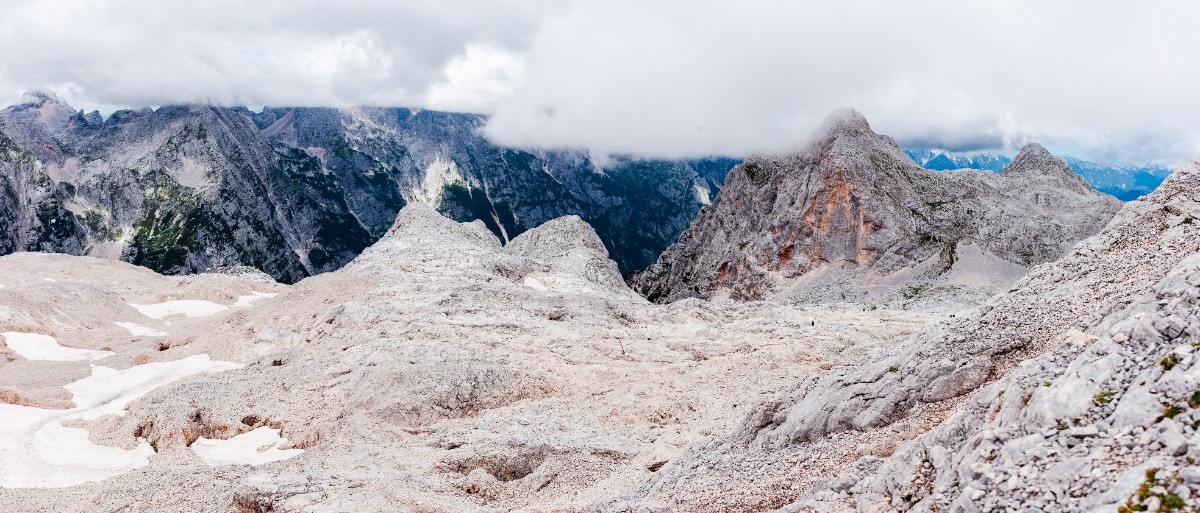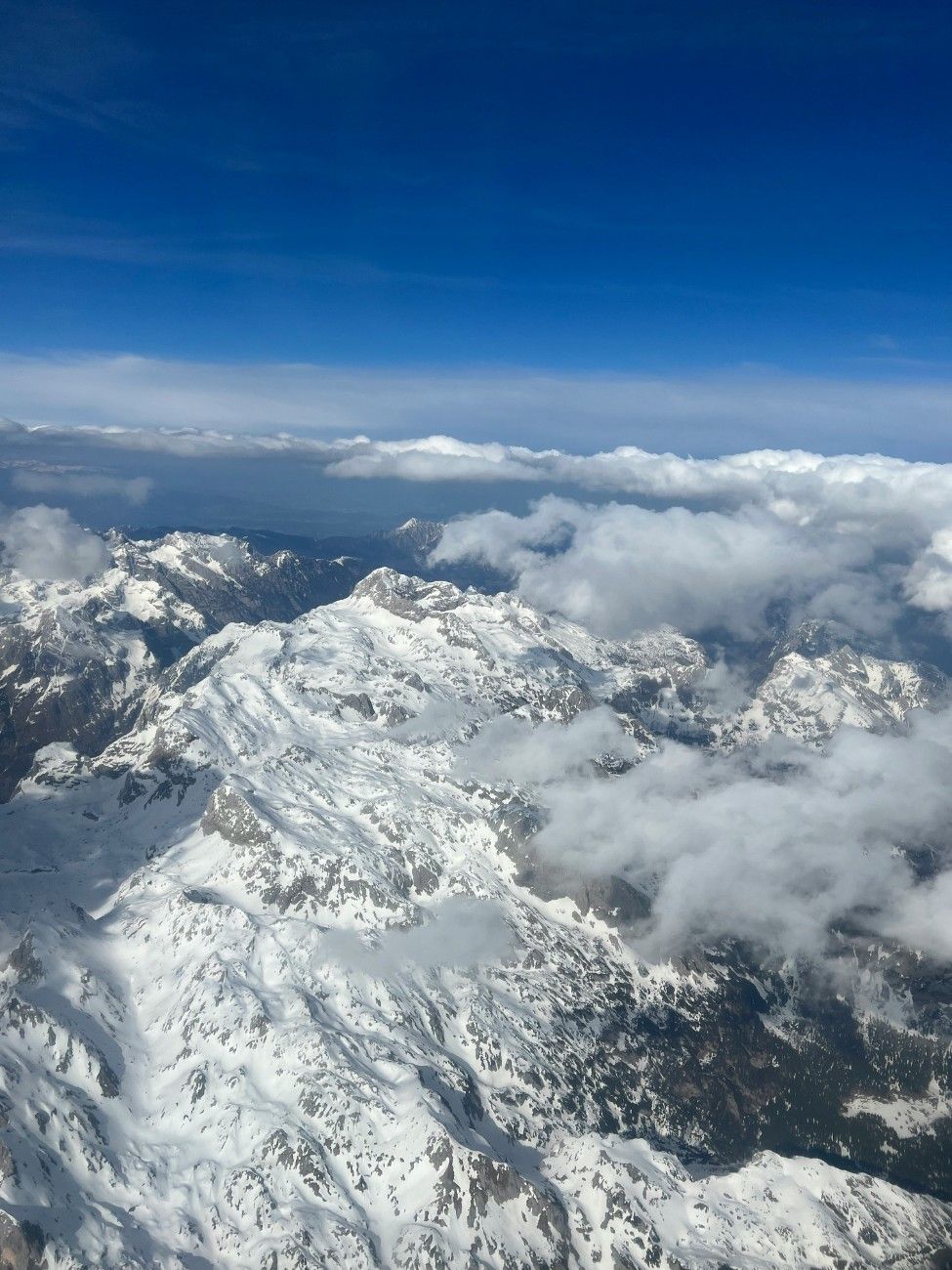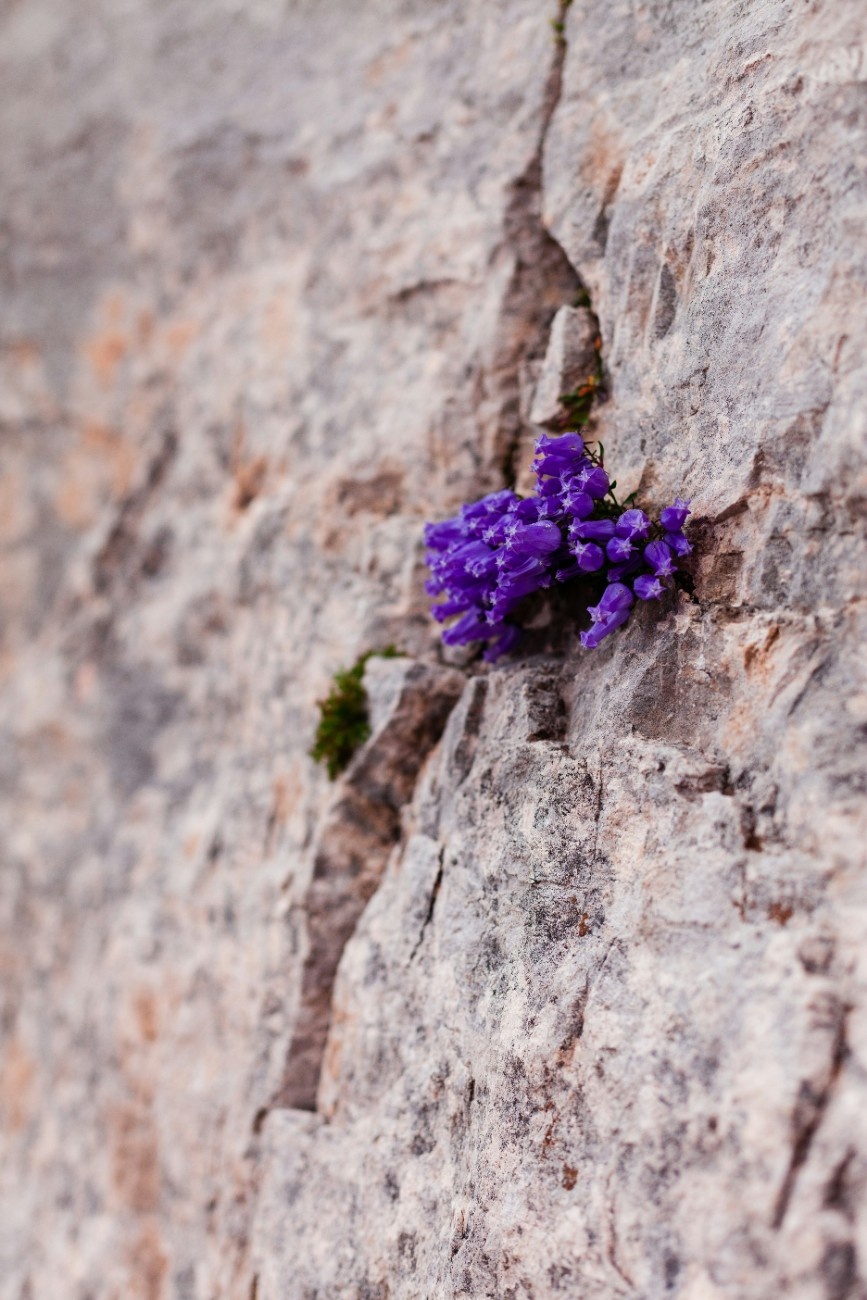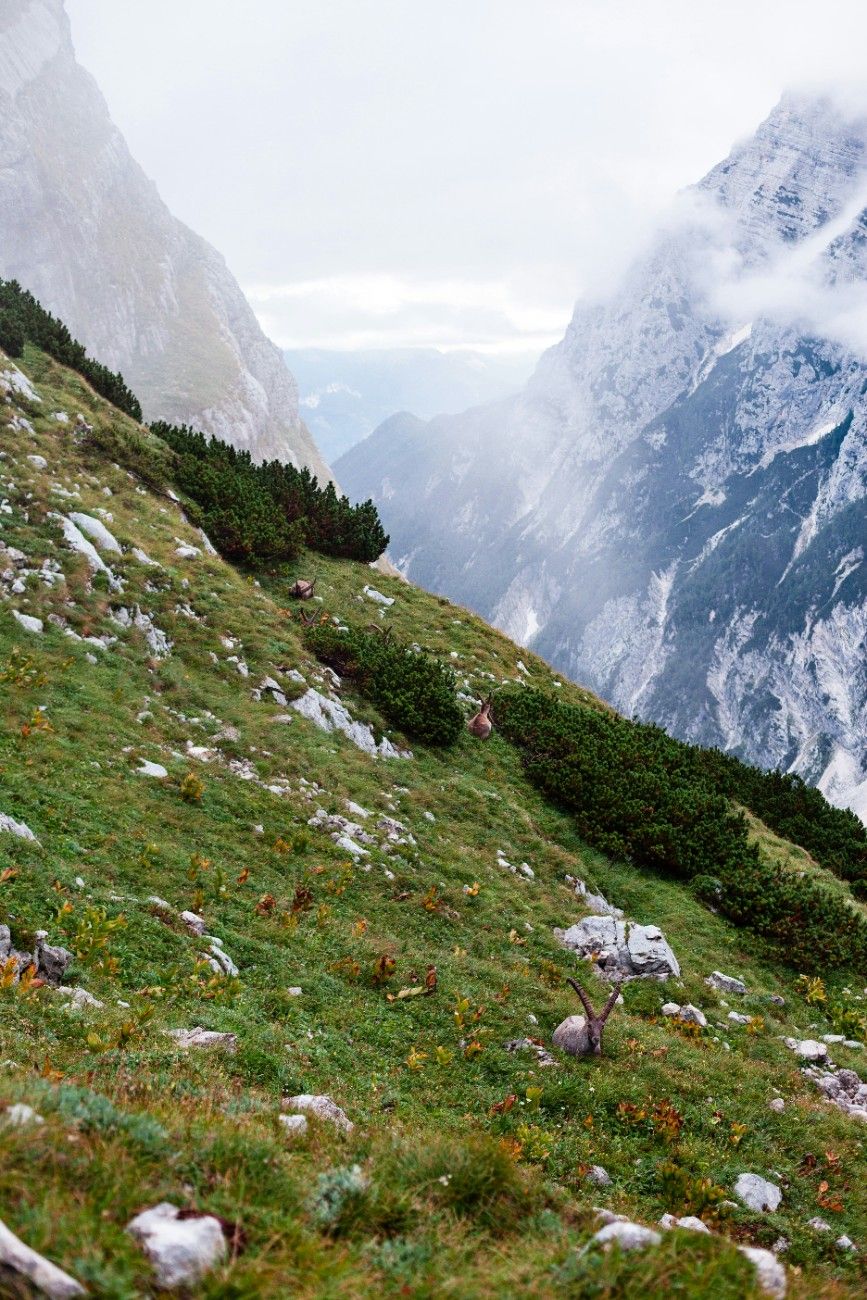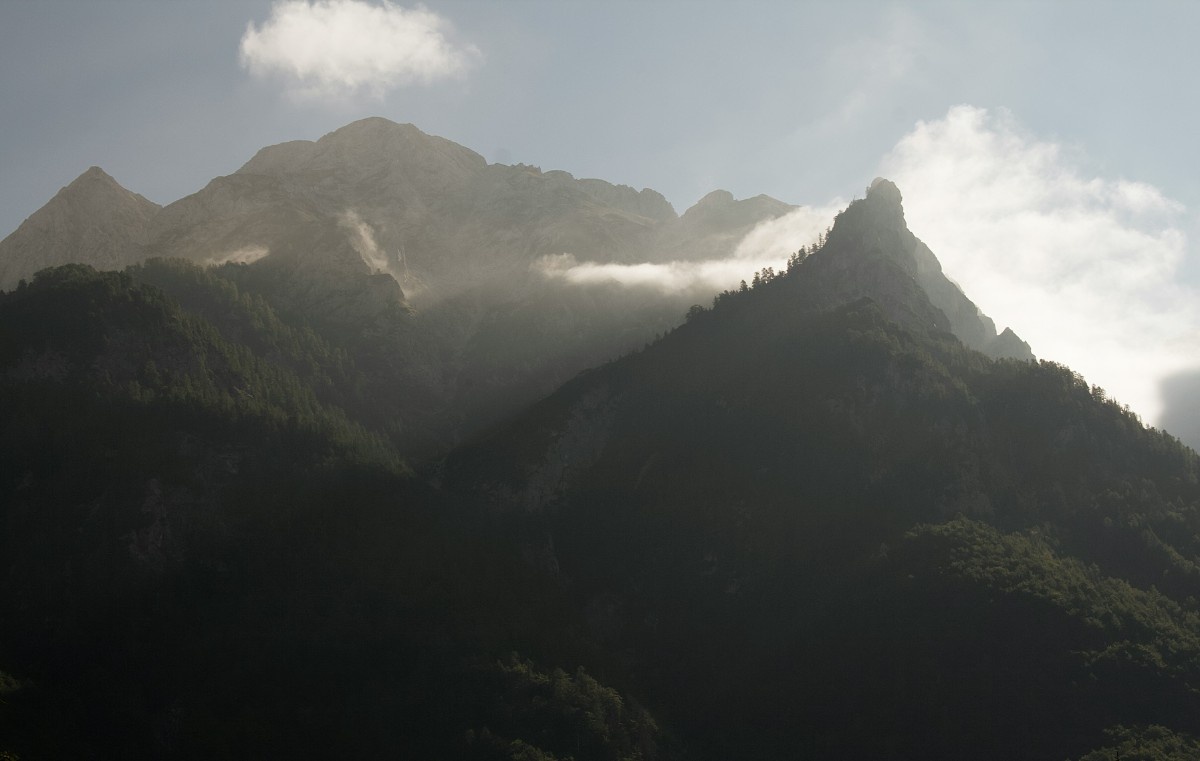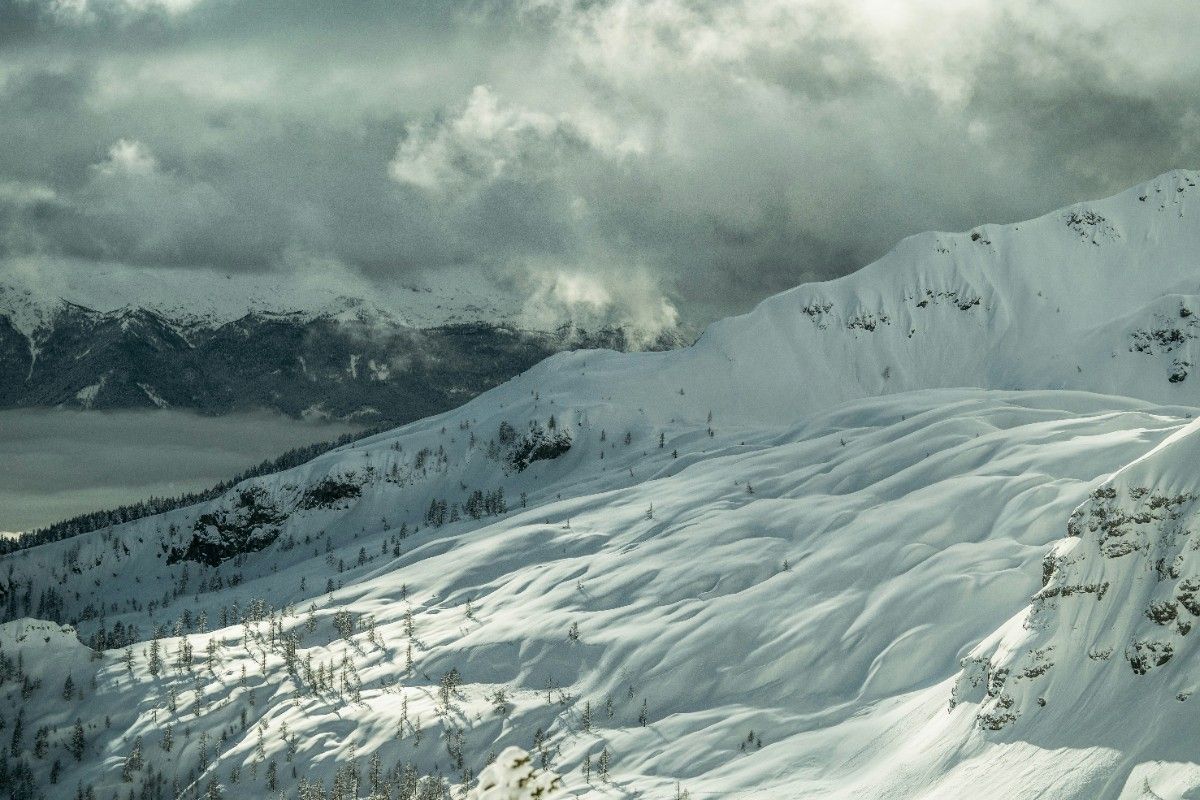Introduction to Triglav National Park, Slovenia
Overview of Triglav National Park
Triglav National Park, located in the stunning Julian Alps of Slovenia, is a natural wonderland that beckons outdoor enthusiasts and nature lovers alike. As the only national park in the country, it covers an impressive 880 square kilometres and is named after Mount Triglav, the highest peak in Slovenia, standing tall at 2,864 metres. This breathtaking park is characterised by its diverse landscape, which includes towering peaks, pristine glacial valleys, crystal-clear rivers, and an abundance of flora and fauna. Triglav National Park is a haven for adventure seekers, offering countless opportunities for hiking, climbing, skiing, and immersing oneself in the untouched wilderness. With its rich history dating back to 1924, when it was first established as a protected area, Triglav National Park is not only a symbol of Slovenia's commitment to preserving its natural heritage but also a testament to the awe-inspiring beauty that the country has to offer.
Geographical Features and Landmarks
Triglav National Park boasts a diverse array of geographical features that contribute to its stunning beauty. The park is dominated by the Julian Alps, a mountain range known for its rugged peaks, deep valleys, and picturesque alpine meadows. The most iconic landmark within the park is undoubtedly Mount Triglav, the highest peak in Slovenia and a symbol of national pride. This majestic mountain attracts hikers and climbers from around the world, eager to conquer its summit and take in the breathtaking views of the surrounding landscape. Other notable peaks within the park include Mount Škrlatica, Mount Mangart, and Mount Jalovec, each offering its own unique challenges and rewards for adventurers. The park is also home to several stunning glacial lakes, such as Lake Bohinj and Lake Bled, which are popular spots for swimming, boating, and fishing during the summer months. Additionally, the Soča River, known for its vibrant emerald-green colour and excellent water sports opportunities, winds its way through the park, adding to its picturesque charm.
Hiking in Triglav National Park
Overview of Hiking Trails
Hiking is one of the most popular activities in Triglav National Park, and for a good reason. The park boasts an extensive network of well-maintained trails that cater to hikers of all skill levels, from casual walkers to experienced trekkers. These trails offer a diverse range of experiences, from gentle walks through picturesque valleys to challenging ascents to the summit of Mount Triglav. One of the most iconic hikes in the park is the Triglav Traverse, a multi-day trek that takes you through some of the most stunning landscapes in the Julian Alps. This route typically starts in the Krma Valley and ends in the Vrata Valley, covering a distance of around 40 kilometres. Along the way, hikers will encounter rugged mountain passes, serene alpine meadows, and jaw-dropping views of the surrounding peaks. While the Triglav Traverse is a challenging hike that requires a good level of fitness and experience, the rewards are well worth the effort. For those seeking a less strenuous hike, the Soča Trail is an excellent option, following the emerald-green Soča River and taking you through a series of charming villages and stunning gorges.
Hiking Safety and Preparation
While hiking in Triglav National Park can be an incredibly rewarding experience, it is essential to prioritise safety and come prepared for the challenges that the trails may present. The weather in the park can be unpredictable, with conditions changing rapidly, especially at higher elevations. It is crucial to check the weather forecast before setting out and to pack appropriate clothing, including waterproof gear and layers for varying temperatures. Hikers should also wear sturdy hiking boots with good ankle support, as the trails can be rocky and uneven. It is recommended to carry a backpack with essential items such as water, snacks, a first-aid kit, a map, and a compass or GPS device. When hiking in groups, it is advisable to stay together and maintain a pace that is comfortable for all members. In case of an emergency, it is important to know how to contact mountain rescue services and to have a basic understanding of first-aid procedures. Hikers should also be aware of their own physical limitations and not push themselves beyond their capabilities. By taking these precautions and being prepared, hikers can ensure a safe and enjoyable experience while exploring the stunning trails of Triglav National Park.
Notable Hiking Trails
Triglav National Park offers a wide range of hiking trails that cater to various interests and skill levels. In addition to the aforementioned Triglav Traverse and Soča Trail, there are several other notable hikes worth exploring. The Vintgar Gorge Trail is a popular choice, taking hikers along a wooden walkway through a narrow gorge filled with crystal-clear pools and cascading waterfalls. This trail is relatively easy and suitable for families, offering a unique and picturesque experience. Another must-see trail is the Pokljuka Plateau Trail, which winds through dense forests and open meadows, providing stunning views of the Julian Alps and the Bohinj Valley. This trail is known for its diverse landscapes and is a great option for those looking to experience the park's varied ecosystems. For history buffs, the Tolmin Gorges Trail offers a chance to explore the remnants of World War I battles, with old fortifications and museums along the way. This trail also showcases the natural beauty of the Tolmin Gorges, with its clear waters and towering rock walls. No matter which trail you choose, hiking in Triglav National Park is sure to be an unforgettable experience, full of breathtaking views, fresh mountain air, and a deep connection to the natural world.
Accommodation Options in Triglav National Park
Hotels and Lodges
Triglav National Park offers a range of accommodation options to suit various preferences and budgets, ensuring that visitors can find the perfect place to stay while exploring this stunning natural wonderland. For those seeking a more luxurious experience, there are several hotels located within the park and in the surrounding towns. The Bohinj ECO Hotel, situated on the edge of Lake Bohinj, is a popular choice for its stunning location, eco-friendly practices, and modern amenities. This hotel features a spa, a restaurant serving local cuisine, and easy access to hiking trails and water sports on the lake. Another excellent option is the Hotel Jezero, located in the heart of the Bohinj Valley. This family-run hotel offers comfortable rooms, a restaurant serving traditional Slovenian dishes, and a prime location for exploring the park's many attractions. Other notable hotels in the area include the Hotel Skipass in Kranjska Gora, which offers direct access to ski slopes in the winter and hiking trails in the summer, and the Hotel Razor in Tolmin, which provides a perfect base for exploring the Soča Valley.
Mountain Huts and Shelters
For a more immersive and authentic experience, visitors can choose to stay in one of the many mountain huts scattered throughout Triglav National Park. These rustic accommodations offer a unique opportunity to spend the night in the heart of the wilderness, surrounded by the park's stunning natural beauty. The mountain huts vary in size and amenities, but most offer basic beds, shared bathrooms, and simple meals. Some popular mountain huts include the Vodnikov Dom, the highest hut in the park, which offers breathtaking views of the surrounding peaks, and the Triglavski Dom, located at the foot of Mount Triglav, which serves as a popular starting point for hikers attempting to summit the mountain. Other notable huts include the Dom Planika, situated on the Triglav Glacier, and the Aljažev Dom, located in the Vrata Valley. While staying in mountain huts, visitors should be prepared for basic living conditions and should bring their own sleeping bags and towels. It is also important to book in advance, especially during peak season, as these accommodations can fill up quickly.
Camping and Glamping
For those who prefer a closer connection to nature, camping is another popular option in Triglav National Park. The park offers several designated camping areas, such as Camp Triglav Zaka and Camp Zlatorog, which provide basic facilities like toilets, showers, and electricity. These campsites are often located in picturesque settings, surrounded by mountains, forests, and rivers, allowing visitors to fully immerse themselves in the park's natural beauty. In recent years, glamping (glamorous camping) has also gained popularity in the park, offering a more comfortable and luxurious camping experience. Glamping options include fully-equipped tents, yurts, and treehouses, often with amenities like comfortable beds, private bathrooms, and even heating. Some popular glamping sites in the park include Garden Village Bled, which offers treehouses and glamping tents near Lake Bled, and Eco Resort pod Veliko Planino, which provides unique glamping experiences in the heart of the park. Regardless of whether you choose traditional camping or glamping, it is essential to respect the park's rules and regulations, such as keeping noise levels down, disposing of waste properly, and minimising your impact on the environment.
Weather in Triglav National Park
Seasonal Weather Patterns
Triglav National Park weather is characterised by a typical alpine climate, with significant variations depending on the season and elevation. Understanding the seasonal weather patterns is essential for planning a visit to the park and ensuring a safe and enjoyable experience. In summer (June to August), temperatures in the valleys and lower elevations generally range from 15°C to 25°C during the day, making it the most popular time for hiking and other outdoor activities. However, temperatures can drop significantly at higher elevations, and afternoon thunderstorms are common, so it is crucial to pack appropriate clothing and gear. Autumn (September to November) brings cooler temperatures and stunning foliage colours, with daytime temperatures ranging from 5°C to 15°C. This can be a great time to visit the park, as the crowds begin to thin out and the landscape takes on a beautiful golden hue. Winter (December to February) is characterised by cold temperatures and heavy snowfall, with temperatures often dropping well below freezing. Many trails and roads become inaccessible due to snow, but this season attracts winter sports enthusiasts for skiing, snowshoeing, and ice climbing. Spring (March to May) is a transitional season, with temperatures gradually warming up and snow beginning to melt. While some trails may still be closed due to lingering snow and wet conditions, this can be a lovely time to visit the park, as waterfalls are at their most impressive and wildflowers begin to bloom.
Microclimates and Local Variations
Due to its diverse topography and range of elevations, Triglav National Park experiences various microclimates and local variations in weather. These microclimates can result in significant differences in temperature, precipitation, and wind conditions within relatively short distances. For example, the Soča Valley, located in the southern part of the park, tends to have a milder climate compared to the high-altitude areas around Mount Triglav. This is due to the valley's lower elevation and the influence of warm air masses from the Adriatic Sea. Similarly, the Bohinj Valley, situated in the park's central region, is known for its unique microclimate, characterised by frequent morning fog and temperature inversions, where cold air settles in the valley while warmer air rises to the surrounding peaks. Understanding these local variations is important for visitors, as it can help them better plan their activities and prepare for the conditions they may encounter in different parts of the park.
Weather Safety and Preparation
Given the changeable nature of Triglav National Park weather, it is essential for visitors to prioritise safety and be prepared for a range of conditions. Before setting out on any outdoor activities, it is crucial to check the latest weather forecast and be aware of any potential hazards, such as thunderstorms, heavy rainfall, or strong winds. Visitors should also be prepared for sudden changes in weather, especially when hiking at higher elevations, where conditions can deteriorate rapidly. It is recommended to pack appropriate clothing for various weather scenarios, including waterproof and windproof layers, warm insulation, and sturdy footwear with good traction. Other essential items include a map and compass (or GPS device), a first-aid kit, a headlamp or flashlight, and plenty of water and snacks. When engaging in winter sports or hiking in snowy conditions, it is crucial to have proper equipment, such as crampons, ice axes, and avalanche beacons, and to possess the necessary skills and knowledge to use them safely. Visitors should also be aware of the signs and symptoms of hypothermia and altitude sickness and know how to respond accordingly. By taking these precautions and being prepared for the Triglav National Park weather, visitors can ensure a safe and enjoyable experience while exploring this stunning alpine wonderland.
Flora and Fauna of Triglav National Park
Diverse Plant Life
Triglav National Park boasts an incredible diversity of plant life, thanks to its varied landscape and protected status. The park's flora is particularly impressive, with over 1,000 species of flowering plants, including several endemic and rare species. In the spring and summer months, the alpine meadows come alive with a vibrant display of wildflowers, such as the Triglav hawksbeard, the Julian poppy, and the Zois' bellflower. These meadows also support a wide variety of other plant species, including gentians, primroses, and orchids, which play a crucial role in the park's ecosystem by providing food and shelter for various animals. At higher elevations, visitors can find hardy plants adapted to the harsh mountain conditions, such as the edelweiss, a symbol of the Alps, and the alpine forget-me-not, known for its delicate blue flowers. The park's forests are equally diverse, with a mix of deciduous and coniferous trees that vary depending on the elevation. Lower elevations are dominated by beech, oak, and maple trees, which provide a lush canopy and support a wide range of understory plants and fungi. Higher up, the forests transition to spruce, larch, and stone pine, which are better adapted to the colder temperatures and shorter growing seasons. These forests are home to a variety of rare and endangered plant species, such as the lady's slipper orchid and the black vanilla orchid, which are protected within the park's boundaries.
Rich Fauna
In addition to its diverse flora, Triglav National Park is also home to a wide range of animal species, many of which are endemic to the Julian Alps or the wider Alpine region. The park's most iconic species is the chamois, a sure-footed goat-antelope that is well-adapted to the steep, rocky terrain. Visitors can often spot chamois grazing on high mountain meadows or navigating treacherous cliff faces with remarkable agility. Another notable mammal species is the alpine ibex, a large wild goat that was once hunted to near-extinction but has since been successfully reintroduced to the park. Other mammals that call the park home include the red deer, the roe deer, the alpine marmot, and the brown bear, which has been making a comeback in the region thanks to conservation efforts. Triglav National Park is also a haven for birdwatchers, with over 100 species of birds recorded within its boundaries. The park's avian residents include several species of birds of prey, such as the golden eagle, the peregrine falcon, and the Eurasian eagle-owl, as well as alpine specialists like the alpine chough and the wallcreeper. In the park's forests, visitors can spot woodpeckers, nutcrackers, and the capercaillie, a large grouse known for its distinctive mating rituals. The park's rivers and streams support a diverse array of aquatic life, including the marble trout, a rare and endemic species found only in the Soča River basin, as well as the grayling and the Danube salmon. Amphibians and reptiles, such as the alpine salamander, the common frog, and the viviparous lizard, also play important roles in the park's ecosystems.
Conservation Efforts
To protect the remarkable biodiversity of Triglav National Park, park authorities and conservation organisations have implemented various measures and initiatives. These efforts aim to minimise the impact of human activities on the park's flora and fauna while also promoting sustainable tourism practices. One key aspect of conservation in the park is habitat protection, which involves maintaining and restoring natural habitats to ensure that plant and animal species have the resources they need to thrive. This includes preserving old-growth forests, managing alpine meadows through traditional grazing practices, and protecting wetlands and other aquatic habitats. Another important conservation measure is monitoring and research, which helps park managers better understand the status and trends of various species populations and identify potential threats. By collecting data on plant and animal populations, as well as environmental factors like water quality and climate, researchers can develop targeted conservation strategies and adapt management practices as needed. The park also engages in active species management, such as the reintroduction of ibex and the brown bear, to help restore populations of these iconic species. Education and outreach are also critical components of conservation in Triglav National Park. By providing visitors with information about the park's flora and fauna, as well as guidelines for responsible behaviour, park authorities aim to foster a sense of stewardship and encourage visitors to minimise their impact on the environment. Through guided walks, educational displays, and interpretive materials, visitors can learn about the park's unique biodiversity and the importance of preserving it for future generations.
Cultural Heritage of Triglav National Park
Archaeological Sites and Historical Artifacts
Triglav National Park is not only a natural wonderland but also a treasure trove of cultural heritage, with a human history dating back thousands of years. The park's archaeological sites and historical artifacts provide a fascinating glimpse into the lives of the people who have called this region home throughout the ages. One of the most significant archaeological sites in the park is the Ajdna Archaeological Site, located near the village of Potoki. This site, which dates back to the Iron Age and late Antiquity, features the remains of a hilltop settlement, including stone foundations of buildings, defensive walls, and a wealth of artifacts such as pottery, tools, and jewellery. These findings offer valuable insights into the daily lives, trade networks, and cultural practices of the ancient inhabitants of the Julian Alps. Another notable site is the Tonovcov Grad Archaeological Site, situated on a rocky hilltop near Kobarid. This site encompasses the ruins of a late Antique fortified settlement, which was inhabited from the 4th to the 7th centuries AD. The well-preserved remains include a church complex, residential buildings, and a wealth of artifacts that shed light on the early Christian period in the region. Throughout the park, visitors can also find numerous historical artifacts and monuments, such as World War I remnants, old mining infrastructure, and traditional agricultural tools, which serve as tangible reminders of the area's rich and varied past.
Traditional Architecture and Settlements
The cultural heritage of Triglav National Park is also reflected in its traditional architecture and settlements, which have been shaped by centuries of adaptation to the rugged alpine environment. The park's villages and hamlets feature a distinctive architectural style characterised by wooden or stone buildings with steeply pitched roofs to shed heavy snowfall. These structures often incorporate elements of functional design, such as narrow windows to retain heat and large overhanging eaves to protect against the elements. One of the best examples of traditional architecture in the park is the Pocar Farm in the Radovna Valley. This beautifully preserved 16th-century farmstead comprises a cluster of wooden buildings, including a main house, a barn, and a granary, which showcase the typical layout and construction techniques of alpine farms. Visitors can explore the farm's interiors, which have been transformed into an ethnographic museum, to learn about the daily life and customs of the region's rural communities. Another notable settlement is the picturesque village of Trenta, located in the heart of the Soča Valley. This village, which has been inhabited since prehistoric times, features a charming ensemble of traditional houses, a historic church, and a museum dedicated to the history and culture of the valley. The museum's exhibits highlight the area's rich heritage, including its role in World War I, its mining and logging past, and its long tradition of mountaineering and alpine exploration.
Intangible Cultural Heritage
In addition to its tangible cultural heritage, Triglav National Park is also home to a rich intangible heritage, comprising the traditional knowledge, skills, and customs that have been passed down through generations. One of the most important aspects of the park's intangible heritage is its musical tradition, which includes a wide range of folk songs, dances, and instrumental pieces. The park's communities have long used music as a means of expressing their cultural identity, commemorating important events, and celebrating the changing seasons. Visitors can experience this musical heritage firsthand by attending local festivals and events, such as the Cow Ball Festival in Bohinj, which marks the return of the cows from their summer pastures with a lively parade, traditional costumes, and plenty of music and dancing. Another significant element of the park's intangible heritage is its culinary traditions, which reflect the close relationship between the local communities and their natural environment. The park's cuisine is characterised by hearty, rustic dishes that make use of locally sourced ingredients, such as fresh herbs, wild game, and dairy products from the region's alpine pastures. Some of the most iconic dishes include Fricka, a savoury stew made with potatoes, onions, and curd cheese, and Žganci, a traditional porridge-like dish made from cornmeal or buckwheat flour. By sampling these local specialties, visitors can gain a deeper appreciation for the park's cultural heritage and the ways in which it is intimately connected to the landscape and its resources.
Activities and Adventures in Triglav National Park
Hiking and Trekking
Triglav National Park offers an extensive network of well-maintained hiking trails, making it a paradise for outdoor enthusiasts. With trails suitable for all skill levels, visitors can explore the park's stunning landscapes, from lush valleys to rugged mountain peaks. One of the most popular and challenging hikes is the ascent to the summit of Mount Triglav, the highest peak in Slovenia. This iconic trek typically takes two days and requires a good level of fitness and experience. Along the way, hikers are rewarded with breathtaking views of the Julian Alps and a sense of accomplishment upon reaching the summit. For those seeking a gentler experience, the Soča Trail follows the emerald-green Soča River, winding through picturesque villages and offering a more leisurely pace. Other notable hikes include the Vintgar Gorge Trail, which features wooden boardwalks and stunning waterfalls, and the Valley of the Seven Lakes Trail, which takes hikers through a series of glacial lakes nestled among the mountains. Regardless of the route chosen, hiking in Triglav National Park provides an immersive way to experience the park's natural beauty and discover its hidden gems.
Winter Sports
When the snow blankets Triglav National Park, the landscape transforms into a winter wonderland, offering a wide range of activities for cold-weather enthusiasts. Skiing and snowboarding are popular pursuits, with several ski resorts located within and around the park. The largest and most well-known resort is Vogel Ski Centre, situated above Lake Bohinj. This resort offers 22 kilometres of ski runs, catering to skiers and snowboarders of all levels, and provides stunning views of the Julian Alps. For those seeking a more tranquil experience, cross-country skiing is a fantastic way to explore the park's winter landscape. The Pokljuka Plateau, with its extensive network of groomed trails, is a prime destination for cross-country skiers, offering routes that wind through snow-covered forests and across open meadows. Other winter activities include snowshoeing, which allows visitors to access remote areas of the park and enjoy the serene beauty of the winter landscape, and ice climbing, which challenges adventurers to scale frozen waterfalls and icy cliffs. With its diverse range of winter sports and activities, Triglav National Park is a perfect destination for those seeking to embrace the magic of the colder months.
Water Sports and Fishing
The pristine rivers and lakes of Triglav National Park provide numerous opportunities for water sports and fishing. The Soča River, known for its stunning turquoise colour and crystal-clear waters, is a popular destination for white-water rafting, kayaking, and canyoning. The river offers a range of difficulty levels, from gentle float trips suitable for families to adrenaline-pumping rapids that challenge experienced paddlers. For those interested in a more relaxed aquatic experience, Lake Bohinj and Lake Bled offer tranquil settings for swimming, stand-up paddleboarding, and boating. These glacial lakes, surrounded by towering peaks and lush forests, provide a serene escape from the hustle and bustle of everyday life. Fishing enthusiasts will also find plenty of opportunities to cast a line in the park's rivers and lakes. The Soča River is renowned for its excellent fly fishing, particularly for the native Marble Trout, a prized game fish found only in the Adriatic basin. Other species found in the park's waters include brown trout, grayling, and rainbow trout. Fishing in Triglav National Park is regulated to ensure the sustainability of fish populations, and anglers must obtain the appropriate permits and adhere to catch-and-release practices in designated areas.
Responsible Tourism in Triglav National Park
Leave No Trace Principles
As the popularity of Triglav National Park continues to grow, it is increasingly important for visitors to practice responsible tourism and minimise their impact on the park's delicate ecosystems. One of the key principles of responsible tourism is "Leave No Trace," a set of guidelines that promote outdoor ethics and help preserve the natural environment. When hiking or camping in the park, visitors should strive to leave the area in the same condition as they found it, or even better. This means properly disposing of waste, including biodegradable materials, and packing out all trash. Hikers should stay on designated trails to prevent erosion and damage to vegetation, and campers should use established campsites or practice low-impact camping techniques in permitted areas. Visitors should also respect wildlife by observing from a safe distance, avoiding feeding or disturbing animals, and storing food and scented items properly to prevent attracting bears or other creatures. By adhering to Leave No Trace principles, tourists can help maintain the park's pristine beauty for future generations.
Supporting Local Communities
Another essential aspect of responsible tourism in Triglav National Park is supporting local communities and economies. By choosing to stay in locally-owned accommodations, such as family-run guesthouses or mountain huts, visitors can ensure that their tourism dollars directly benefit the people who call the park home. Purchasing locally-produced goods, such as handicrafts, artisanal food products, or souvenirs, also helps to sustain traditional livelihoods and preserve cultural heritage. When dining in the park or surrounding areas, seeking out restaurants that source ingredients from local farmers and producers not only supports the local economy but also offers a taste of the region's authentic flavours. Visitors can also contribute to the local community by participating in eco-friendly tours and activities led by local guides, who possess intimate knowledge of the park's natural and cultural treasures. These experiences often provide deeper insights into the park's ecology, history, and traditions while supporting sustainable tourism practices that benefit both the environment and the local population.
Education and Awareness
Promoting responsible tourism in Triglav National Park also involves education and awareness. Park authorities, local organisations, and tourism providers play a crucial role in informing visitors about the importance of environmental conservation, sustainable practices, and respectful behaviour. This can be achieved through informative signage, educational exhibits at visitor centres, and guided tours that emphasise the park's unique ecology and the need for stewardship. By learning about the park's fragile ecosystems, rare species, and ongoing conservation efforts, visitors can develop a greater appreciation for the natural world and a stronger sense of responsibility towards its protection. Visitors can also contribute to the protection of Triglav National Park wildlife by participating in citizen science initiatives, such as reporting sightings of certain species or assisting with habitat monitoring projects. These activities not only help to raise awareness but also provide valuable data for park managers and researchers working to preserve the park's biodiversity. Ultimately, by fostering a culture of education and awareness, responsible tourism can help ensure that Triglav National Park remains a thriving wilderness for generations to come, while also enriching the experiences of those who visit this extraordinary corner of Slovenia.
Related Articles

Let us know you agree to cookies
We use marketing, analytical and functional cookies as well as similar technologies to give you the best experience. Third parties, including social media platforms, often place tracking cookies on our site to show you personalised adverts outside of our website.
We store your cookie preferences for two years and you can edit your preferences via ‘manage cookies’ or through the cookie policy at the bottom of every page. For more information, please see our cookie policy.


